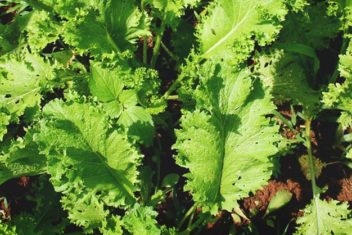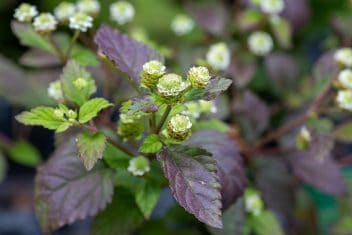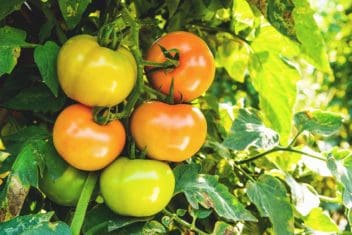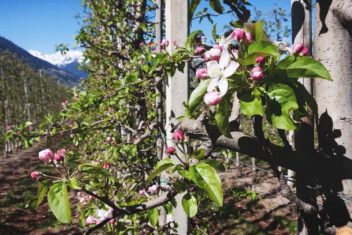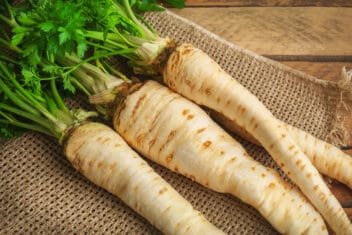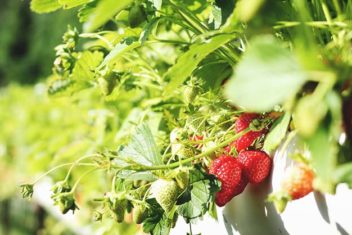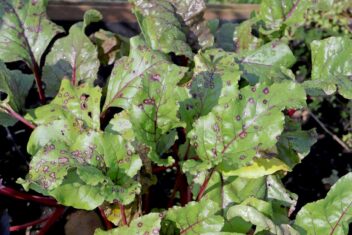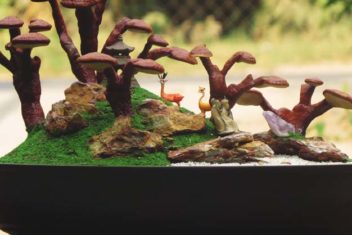Journaling is one of the most rewarding hobbies. Each journal is a beautiful and unique way to record your thoughts, plan your dreams, or track cyclical events. I use journals as reading logs, weekly planners, and homestead management tools, as well as keeping a simple journal of day-to-day thoughts and reflections.
One of the most consistently helpful journals I keep is my garden journal.
Every year, I spend the winter planning out next year’s garden. I work out a layout, look through my saved seeds, order new seeds, and plot out a game plan for starting seeds, building soil, weeding, harvesting, and canning. I do it all in my garden journal.
Function and Purpose of Journaling
Of course, everyone approaches gardening (and journaling) a little differently. For some of us, a garden journal is a great place for sketches or watercolors of the garden through various seasons, for others, it’s a great medium for cost-to-output analysis.
I know one gardener who uses his journal to compare the cost of supplies to the current market price of his total yield. I know another who fills his garden journal with snatches of poetry and watercolor paintings of the garden at sunset in each month of the year.
Your journal exists to serve your purposes as a gardener. But I find it helpful to use it in some way as a recorded keeping and planning tool.
Think about how you took notes in school – did you illustrate your notes, use a lot of charts, or simply write them out? Did you tell stories in your notes to keep them interesting? Likely, the way you took notes is similar to the way you’ll want to keep your journal.
Next, think of the type of planning that will best help your garden thrive. Do you want to rotate your garden each year? Nothing helps me plan rotational gardening better than looking back over my garden journal each spring.
I can see where the cabbages were planted last year and the year before. I can see that garlic has grown in the same bed twice and should be moved in the fall. Chose to record aspects of your garden that are important to you, and skip aspects that aren’t a priority.
Choosing a Journal
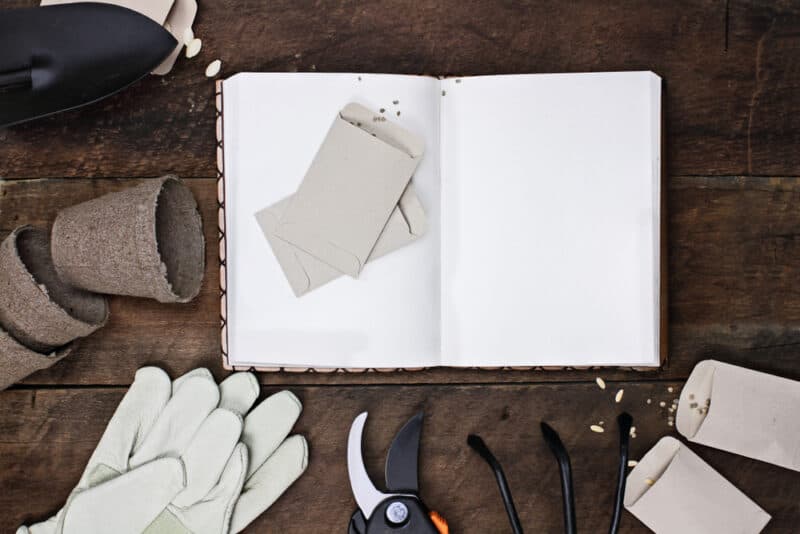
There are so many journals to choose from. Of course, there a special-made gardening journals on the market. Most of these come with many common journaling categories all ready for you to fill in, like seed info, garden maps, and planting dates.
For instance, the Garden Life Planner from Gem Publishing has all that plus a spot for each week of the year to make notes.
The Gardener’s Logbook lets you track each individual plant year after year, so it’s best for perennials.
Many journals are beautiful, well-made books that can get you started with minimal effort on your part.
Of course, they tend to be a little more pricey than DIY options, but you’re paying for convenience and organization. These pre-designed gardening journals do have a few drawbacks, however.
Price is only the first limitation. Professionally made gardening journals can start at around $20 and go up to over $60 pretty quickly.
These journals are also usually designed to cover one year, which means you’ll need to keep buying new journals each year – and keep track of your old ones. Since one of the best aspects of a garden journal is the opportunity to track your garden over the years, it can be frustrating to continually switch journals.
Another drawback is that pre-printed gardening journals don’t offer a lot of variety. If your garden is much smaller, or much larger than expected, the journal may not fit your plans. If your garden includes year-round plants, an orchard, or specific growing techniques – a commercially made journal may not be enough for you.
Other Options
Many of the DIY journals provide a great base for a completely personalized garden journal. If you’ve followed the bullet journal trend, you may have already seen exciting, artistic bullet journals tracking every possible aspect of gardening.
I like to keep my gardening journals in a traveler’s notebook system that gives me both space and freedom to focus on the aspects of my garden that require the most planning.
Other people prefer to use a basic blank or lined notebook. It all depends on what and how you’re hoping to record your gardening.
Don’t forget that you can go digital, too. There are lots of templates that you can use on your tablet or laptop. Just remember that you probably won’t want to use these options out in the field or you might get dirt all over your pricey gadgets.
A Basic Gardening Journal
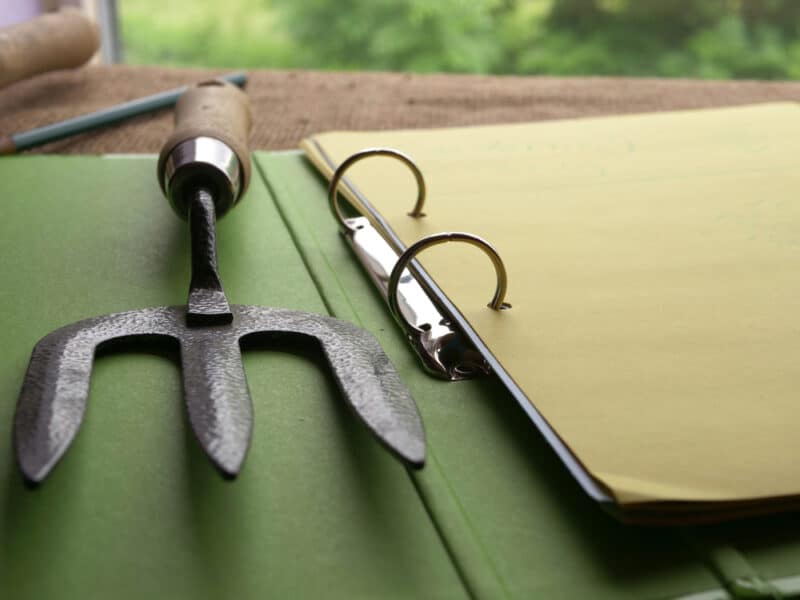
While each journal is unique, there are some basic aspects of the garden most people will want to track. These are the foundational elements of your gardening journal.
Layout
Whether sketched, painted, plotted out, or simply described in words, a basic layout of the garden (or gardens) is immensely helpful.
Layout pages give you an opportunity to see at a glance what to expect from each area of your garden. A yearly layout will help you rotate your crops, plant applications of fertilizer, and even keep track of weeding.
Planning a layout can also help if you’re interested in designing more ornamental gardens or building cold frames later in the season. A simple layout page offers a quick view of the garden from overhead, but a more elaborate layout can provide you with a variety of perspectives.
Seed Records and Planting Times
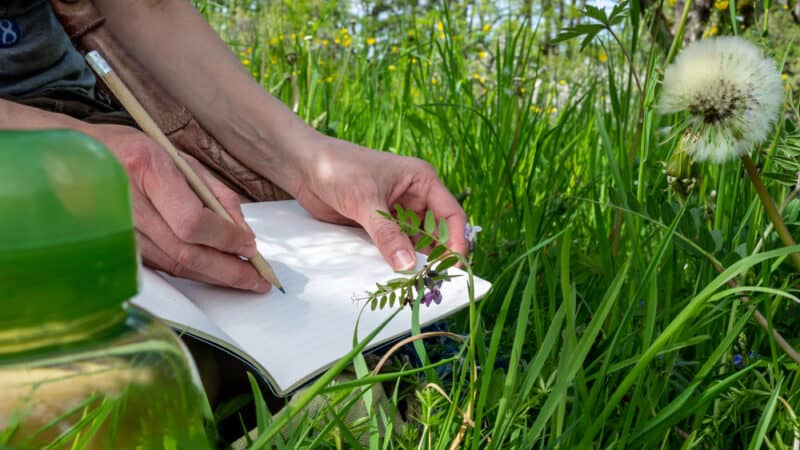
Not every seed thrives in every garden. When I find a variety that is easier to grow, or better suited to my needs, I record the type of plant, variety, and where I found the seeds. I also record the best time to plant, expected harvest time, and any other relevant information.
At one point, my seed records helped me realize that a once-favorite seed supply catalog was declining in quality. I was able to catch the declining viability of their seeds early enough and switch to a new supplier before it deeply impacted my garden.
And every year, when spring is hovering on the horizon, I can check my planting times and remind myself to wait just another week more.
Recording your seed notes is a huge part of successful garden journaling. If you buy seedlings as well, record where you got your plants and how they performed to avoid repeat disappointments and maximize quality control.
Seasonal Notes
As the growing season continues, use your journal to keep track of when you weeded, watered, and fertilized. What pests attacked your garden and how did you deal with them? What sort of harvest did you get, and when did you harvest each plant?
These simple, seasonal notes are often the most extensive part of a gardener’s journal. They’re also some of the most helpful to look back on. A few lines every day, or every other day, will do wonders to keep you aware of everything that’s happened in your garden each year.
Fun Additions to a Garden Journal
My garden journal isn’t all about overplanning every aspect of the garden. I like to keep track of the fun stuff as well. Nothing says your garden journal has to turn into a term paper – keep it enjoyable, or you’ll never want to pick it up.
Canning Recipes
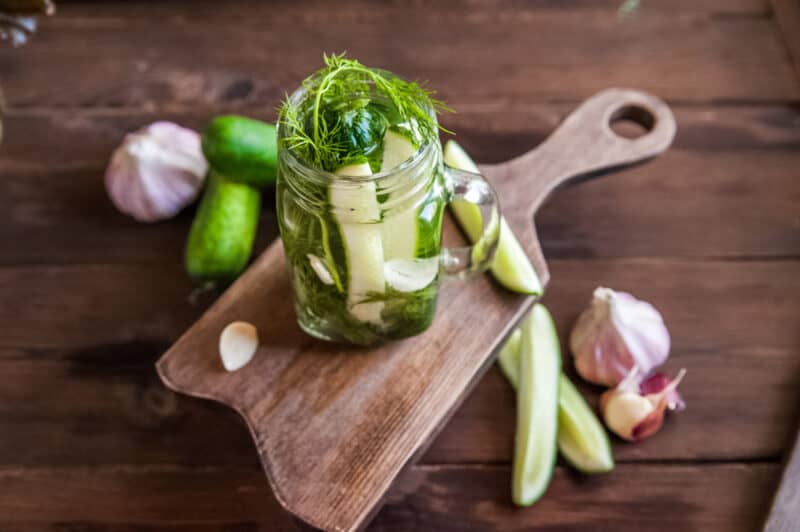
From violet jelly in early spring to cranberry and fir jam in fall, I keep a portion of my garden journal just for fun, “to-try” recipes. I always manage to make one or two new ones each year.
These recipes also help when I’m feeling overwhelmed by a summer glut of zucchini or an autumn abundance of pumpkins.
Craziest Vegetable Award
I like to sketch or photograph my weird-looking veggies and fruits. There are always a few carrots, tomatoes, and squash that look funny. The pears and apples can pull off strange shapes as well.
This year, the price went to a melon that tried to grow between fences. Try adding a “Collection of Oddities” section to your garden journal to remember your strangest harvest.
Trackers
Bullet journal enthusiasts love making elaborate trackers for mundane tasks. If you have trouble motivating yourself to weed the garden or process the tomatoes, try a tracker. Any design that catches your fancy can be used in a garden journal!
Wildlife Sightings

Whether you live in suburbia, on a farm, or deep in the woods – gardens attract wildlife. Some of them are pests, others are welcomed guests. It’s fun to keep track of who is stopping by and why.
My own journals record the time a moose wandered through my pumpkins as well as the more common visits of scarlet tanagers and gray squirrels.
Weather Patterns
I love weather. It’s one of my favorite things to track in my journals. Partially, I love knowing the weather trends and seeing signs of change on the horizon. But weather tracking can be deeply practical as well.
It’s important to know when we’re getting closer to the first frost of fall or the last frost of spring. It’s helpful to know if we’re trending toward drought.
Weather notes in your garden journal will help you keep an eye on the climate around your house. The more aware we are of little changes, the better we’ll know how to support our gardens.
Books and Articles
Of course, any gardening journal should have a list of resources. If you’ve found a book or article that helped you – note it down. Since articles can be tough to find again, I like to either cut them out of magazines or print them out, and then paste them in my journal.
Having your favorite resources close at hand is incredibly helpful with it comes time to use them

